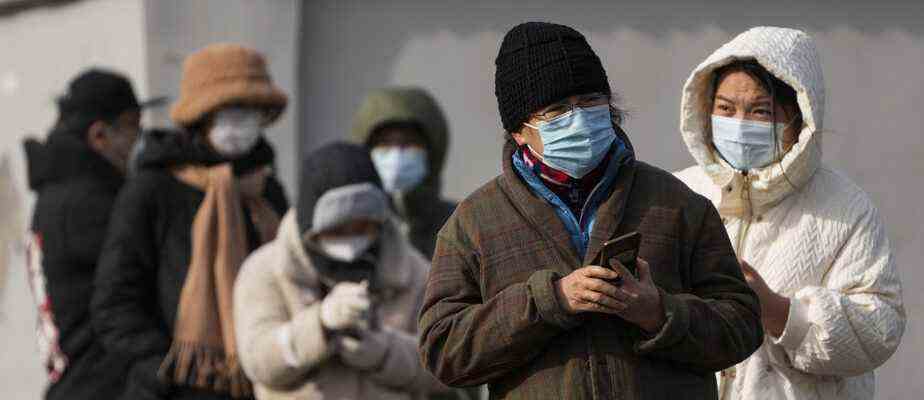(Beijing) Chinese health authorities have given the first signs of a possible easing of their strict “zero COVID-19” policy, after a wave of protests against health restrictions and for more freedoms.
China’s approach to virus ‘faces new circumstances and new tasks’, thanks to less dangerous Omicron variant and advances in vaccination, vice premier says Sun Chunlan, speaking to the National Health Commission (NHC) on Wednesday.
On Tuesday, Beijing had already decided to accelerate the vaccination of the elderly, which is still insufficient.
A central figure in China’s pandemic strategy, Mr.me Sun made no mention of the “zero COVID-19” policy in his remarks-according to remarks reported by the state-run Xinhua News Agency-raising hopes that this strategy, which for three years has upended the daily lives of Chinese and the country’s economy, would soon be eased.

PHOTO THOMAS PETER, REUTERS
A deadly fire in Urumqi, the capital of the Xinjiang region (northwest), was the trigger for the protests over the weekend
Exasperated by repeated confinements and almost daily PCR tests, thousands of Chinese demonstrated last weekend, in Beijing, Shanghai, Guangzhou or even Wuhan – where the first cases had been detected in December 2019.
For the communist authorities, this is the most widespread wave of protest since the pro-democracy mobilizations of Tiananmen in 1989.
Taken by surprise, they called for “repression” to contain this movement, but also seem to be giving a pledge on the health policy front.
Record figures, but tiny
Thus, in the industrial megalopolis of Canton (south), where Tuesday clashes had opposed demonstrators and the police, the confinement in place for several weeks was lifted, despite the record contamination figures.
Because, if the figures are indeed among the highest since the start of the pandemic, they remain tiny: 35,800 local cases reported on Thursday, out of a population of 1.4 billion inhabitants and with a vast majority of asymptomatic cases.
Restrictions have been eased, to varying degrees, in the 11 districts of Guangzhou, including Haizhu, epicenter of the mobilizations.
With the exception of a few neighborhoods considered “high risk”, according to the Local Health Commission, “the others are managed as low risk areas”.
The city of Chongqing (center) also announced on Wednesday that contact cases meeting certain conditions would be entitled to carry out their quarantine at home, a clear change from the policy applied until then which imposed on all — positive cases and contacts — to go to a quarantine centre.
These reductions at the local level, as well as the declarations of Mme Sun, “could be a sign that China is beginning to consider ending its strict zero COVID-19 policy,” analysts at ANZ Research said in a note.
“We believe Chinese authorities are shifting to a ‘living with COVID-19’ strategy, as evidenced by new rules that allow people to self-isolate at home instead of being transported to centers. quarantine,” they add.
Thursday morning, two major Chinese newspapers published expert remarks to reassure the non-dangerousness of COVID-19 in the majority of cases, after similar publications in recent days which seem to prepare the population for a change of mentality.
Political demands
As we approach the third anniversary of the first cases detected in Wuhan, it is clear that the inhabitants are tired.
A deadly fire in Urumqi, the capital of the northwest Xinjiang region, sparked protests over the weekend, with some netizens blaming health restrictions for hampering rescue work.
But the demonstrators also chanted political demands, some even demanding the departure of President Xi Jinping, renewed last month for an unprecedented third term.
The authorities’ strict control over information and health restrictions on travel within China make it difficult to assess the total number of protesters in the country.
But such a widespread uprising is rare, given the crackdown on any form of frontal opposition to the government.
The mobilizations of 1989 ended in bloody repression when the army intervened, notably on the famous Tiananmen Square in Beijing.
On Wednesday, when the death of former President Jiang Zemin, who came to power just after Tiananmen, was announced, the Communist Party rightly underlined its ability to restore calm during this uprising.
